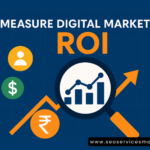In the digital age, where online interactions shape consumer behaviour, the power of social media cannot be overstated. Social media platforms have evolved beyond mere networking spaces; they are now dynamic marketplaces where businesses can harness the influence of millions. Among the myriad tools available, Social Media Ads stand out as a powerful catalyst for business growth. In this comprehensive guide, we will explore the strategic use of Social Media Ads and how mastering them can propel your business towards unprecedented growth.
Understanding the Landscape of Social Media Ads
The Influence of Social Platforms
Social media platforms, such as Facebook, Instagram, Twitter, LinkedIn, and Pinterest, have become integral parts of people’s lives. Users not only connect with friends and family but also engage with brands, discover products, and make purchase decisions. This presents a unique opportunity for businesses to tap into the vast user base and strategically position themselves through targeted Social Media Ads.
The Dynamics of Social Media Advertising
Social Media Ads operate on a pay-per-click (PPC) or pay-per-impression (CPM) model, allowing businesses to reach a highly targeted audience. These ads can take various forms, including image ads, video ads, carousel ads, and sponsored content, providing versatility in delivering messages to users.
Mastering Social Media Ads for Business Growth
1. Define Clear Objectives:
Before diving into Social Media Ads, it’s crucial to define clear objectives. Whether it’s increasing brand awareness, driving website traffic, or boosting sales, having well-defined goals guides your ad strategy and performance measurement.
2. Know Your Audience:
Social media platforms offer detailed targeting options, allowing you to reach specific demographics, interests, and behaviours. Understanding your target audience enables you to create ads that resonate with their needs and preferences.
3. Compelling Ad Creative:
The visual nature of social media demands attention-grabbing creatives. Invest in high-quality visuals, engaging copy, and a clear call to action. Consistency in brand messaging across ads builds recognition and trust.
4. Platform-Specific Strategies:
Each social media platform has its unique features and user behaviours. Tailor your ad strategies to align with the platform’s strengths. For example, Instagram may be ideal for visually appealing content, while LinkedIn might focus on professional networking.
5. Video Content Dominance:
Video content continues to dominate social media. Leverage the power of video ads to tell compelling stories, showcase products, and connect with your audience emotionally. Platforms like Facebook and Instagram prioritize video content in users’ feeds.
6. Ad Placement and Timing:
Consider where your ads will be placed within the platform and the timing of their display. Newsfeed ads, stories, and sponsored content offer different opportunities for engagement. Additionally, schedule ads to appear when your target audience is most active.
7. Engage and Respond:
Social media is inherently interactive. Encourage social media engagement by responding to comments, messages, and mentions promptly. A responsive and engaged brand fosters a sense of community and loyalty among followers.
8. Utilize Retargeting Strategies:
Implement retargeting to reach users who have previously interacted with your brand. This could include website visitors, email subscribers, or users who engaged with your previous ads. Retargeting keeps your brand at the forefront of their minds.
9. Analytics and Optimization:
Leverage the analytics tools provided by social media platforms to measure the performance of your ads. Monitor key metrics such as reach, engagement, click-through rate, and conversion. Use these insights to optimize your future ad campaigns.
10. Budget Allocation and Scaling:
Start with a well-defined budget and monitor its effectiveness. As you gather data and witness positive results, consider scaling your campaigns by allocating more budget to high-performing ads and targeting.
Measuring Business Growth Through Social Media Ads
1. Increased Brand Awareness:
Social Media Ads are powerful tools for building brand awareness. Increased visibility on social platforms translates to a broader audience recognizing and engaging with your brand.
2. Expanded Audience Reach:
Targeted advertising ensures that your message reaches the right audience. As your ads gain traction, your audience reach expands, potentially reaching new demographics and markets.
3. Website Traffic and Conversions:
A successful Social Media Ads strategy drives traffic to your website. Monitoring website analytics allows you to track user behaviour, identify popular products or pages, and optimize for conversions.
4. Community Building and Engagement:
Engaging content and interactive ads contribute to community building. A growing and engaged social media community fosters brand loyalty and encourages users to become brand advocates.
5. Revenue Growth:
Ultimately, the success of Social Media Ads is reflected in revenue growth. By strategically influencing user behaviour, from awareness to conversion, your business can experience a significant increase in sales and revenue.
Conclusion
In the era of digital influence, mastering Social Media Ads is not just a marketing strategy; it’s a pathway to business growth. The power of influence that social media platforms offer is unparalleled, providing businesses with the means to connect, engage, and convert users into loyal customers. By defining clear objectives, understanding your audience, and crafting compelling ad creatives, you can unlock the full potential of Social Media Ads. As you navigate the dynamic landscape of social platforms, remember that strategic success lies in continuous optimization, engagement, and a keen understanding of the ever-evolving social media ecosystem. Embrace the power of influence, and watch as your business grows and thrives in the interconnected world of social media.











